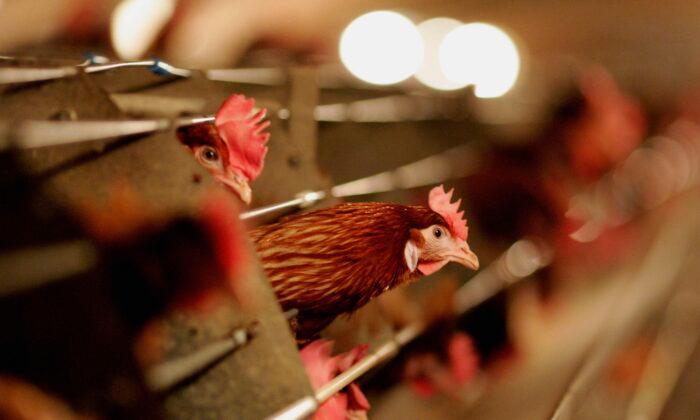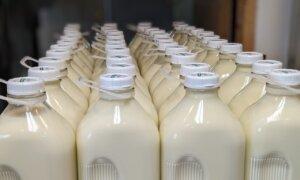Scientists who took milk with the highly pathogenic avian influenza and pasteurized it found that detectable amounts of the influenza remained after the heat treatment was applied, according to a study published on June 14.
The group took H5N1 and diluted it in raw, unpasteurized cow milk. They then heat-treated the milk at 145 degrees Fahrenheit, and 161 degrees Fahrenheit. Commercial milk must be pasteurized at one of three temperatures: either 145 degrees Fahrenheit for 30 minutes, 161 degrees Fahrenheit for 15 seconds, or 191 degrees Fahrenheit for one second.
The testing indicated that the lowest level of pasteurization would be sufficient due to the length of time that level requires, but the scientists found detectable amounts of the virus in milk treated at 161 degrees Fahrenheit after 20 seconds of heat treatment.
“This finding indicates the potential for a relatively small but detectable quantity of H5N1 virus to remain infectious in milk after 15 seconds at 72℃ if the initial virus levels were sufficiently high,” Mr. Munster and the other authors wrote.
The paper was published by the New England Journal of Medicine. Disclosure forms listed employment by two authors by non-NIAID agencies as conflicts of interest.
Limitations included using raw milk samples spiked with the virus, since raw milk from cows infected with H5N1 could have a different makeup.
The work, supported by government funding, may not translate to commercial milk because it was conducted in the lab, the researchers stressed. They said that the findings highlight a need for further research.
“Replication of these findings and extension to other dairy products is needed, including the study of milk from infected dairy cows with commercial pasteurization equipment, because treatment conditions can alter the effectiveness of heat inactivation,” the researchers said.
A spokesperson for the U.S. Food and Drug Administration (FDA) told The Epoch Times in an email that the study “reflected experimental conditions, and should not be used to draw any conclusions about the safety of the U.S. milk supply.”
FDA testing of milk samples taken from grocery stores previously found that about one in five samples tested positive for the bird flu but additional testing on the positive samples showed none yielded live virus.
The FDA and U.S. Department of Agriculture are in the midst of conducting pasteurization studies, including testing the use of homogenizers.
The Department of Agriculture said earlier this year that no samples of ground beef gathered from retailers tested positive for H5N1, but that particles of H5N1 were detected in one of 109 muscle samples collected from cows condemned to be slaughtered. The agency said its personnel “identified signs of illness in the positive animal during post-mortem inspection and prevented the animal from entering the food supply—as is standard for the food inspection process.”
The agency also performed another study, taking burger patties inoculated with the bird flu and cooking them to temperatures equivalent to rare, medium, and well done. The burgers cooked to rare still had detectable levels of the virus, while the burgers cooked to medium and well done did not.
The bird flu has historically mainly circulated in birds but in recent months jumped to cattle in the United States. As of June 13, cows in 96 herds across 12 states have been tested positive. Three farm workers, two in Michigan and one in Texas, have tested positive and are believed to have contracted the illness from cows, according to authorities. They say that people should be cautious around animals with suspected or confirmed cases of the bird flu and that farm workers who must come into contact with them should don protective equipment and monitor themselves for symptoms.







